St. George arose and unlocked the earth, so that the grass grew - the green grass
April 23: Feast of St. George
St. George arose and unlocked the earth,
so that the grass grew - the green grass.Old Moravian proverb
Welcome! Whether you’re a longtime friend or a new kindred spirit here (I recommend visiting the Village Green to get your bearings), I’m delighted to be a companion to you through the liturgical year.
Please enjoy this month’s focus: a practice of attention that encourages us to deeply explore one holiday within the context of the season.
For more to supplement the rest of your April days - including a book club gathering! - flip through the April Almanac.
Pax+bonum, Kristin.
» Printable Resources


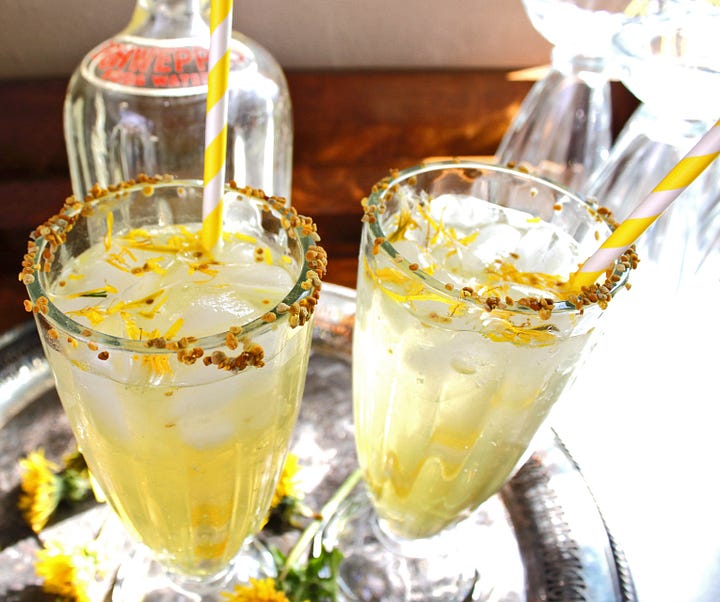
Keeping a liturgical Book of Hours binder helps me to distill all of the inspiration I find, so I can easily look to the elements that have been most nurturing for our family & community.
To help you celebrate St. George’s Day, here’s a packet of goodies for your binder:
Recipe for dandelion soda (with bee pollen rimmer)! Because who doesn’t love a liturgical soda fountain?!
Cover page featuring St. George’s white horse and the Harebells of his feast
Seven pages of prompts, information, & poetry (with illustrations and photos) to help you learn about this feast and reflect on how it intersects with your own life and landscape.
Paid members can find this (as well as my whole archive of printables) in the Scriptorium:
» Original Art
This sweet watercolor scene is inspired by St. George - a horse & house martins (all associated with our springtime saint) are enjoying some dandelion soda together, since this is the traditional day to make dandelion wine. (And Horse is wearing a blue bow, as a nod to the blue ribbons often worn on St. George’s Day!)
Incredibly, a little honeybee - all laden with pollen - landed on this painting while I was photographing it. I could hardly believe this gossamer-winged moment of joy!
This original watercolor painting is available for sale in my Etsy shop:
UNLOCKING SPRING

Listen, lords, in bower and hall,
I sing the wonderous birth
Of brave St. George, whose valorous arm
Rid monsters from the earth.From the “Birth of St. George,” as quoted by Thomas Percy, Reliques of Ancient English Poetry (1765)
In our faith heritage, St. George is one of those ancestors who comes to us shrouded by centuries of legend-building and mythic imagination. These accumulated layers bring us a saint of military prowess, with a wink toward St. Michael the Archangel, a bevy of dragon-slaying tales, and chivalric sensibilities. We usually see brave St. George, in full armor, wielding his sword (or spear, or lance - its name is Ascalon1) against a serpentine dragon that had been wreaking havoc on a small town. It’s a powerful, inspiring image of good triumphing over evil.
Quietly woven into the pattern of these grandiose tales, though, is a saint who heralds springtime growth, green pastures, and a (seemingly) surprising patronage: St. George, patron saint of herdsmen and agricultural laborers.
Of Cappadocian Greek heritage and born around 275 AD, George served with distinction in the Roman military - maybe even in the elite Praetorian Guard, which provided protection to the Emperor.
When the Emperor Diocletian demanded that he abandon his Christian confession, though, St. George refused…and in 303 AD, he was martyred.
In the years between these bookends of his birth and death, generations worth of legends - flavored by the various cultures and regions that encountered his story - grew and flourished.
In this chivalric soldier, farmers found a protector…not in the way we might imagine, though. St. George’s Ascalon definitively pierced the retreating winter days, and his bravery unlocked the very gates of spring:
“In Moravia they ‘meet the Spring’ with a song in which they ask Green Thursday, that is, the day before Good Friday, what he has done with the keys, and he answers: ‘I gave them to St. George. St. George arose and unlocked the earth, so that the grass grew - the green grass.’”
James George Frazer, Aftermath: A Supplement to The Golden Bough (1936)



St. George became adopted by farmers as the herald of spring’s fullness. His valor - sourced from his steadfast faith in Jesus - was translated from the battlefield to the farm field, to the pastures whose greening sustained the lives of both farmer and animal alike, to the crops whose success spelled nourishment or devastation for whole communities.
Holy Jury2 [St. George], the divine envoy,
Has gone to God,
And having taken the golden keys,
Has unlocked the moist earth,
Having scattered the clinging dew
Over White-Russia3 and all the world.Old Belorussian song, quoted by James George Frazer, The Golden Bough (1911)
IN THE FIELD & BEYOND THE FIELD
We have gone around the field,
We have called Yegory [St. George]…
'O thou, our brave [George],
Save our cattle,
In the field, and beyond the field,
In the forest, and beyond the forest,
Under the bright moon,
Under the red sun,
From the rapacious wolf,
From the cruel bear,
From the cunning beast.’Traditional Russian song, quoted by James George Frazer, Aftermath: A Supplement to The Golden Bough (1936)
Moving animals from their winter refuge to their spring pasture is both exhilarating and nerve-wracking. The farmer-animal bond is inherently one of trust and security: and the further our animals go into the pasture or the woods, the further they move from the immediate protection we can offer. They’re vulnerable to predators, more at the whim of weather shifts…overall, as domesticated creatures in a complex landscape both wild and tame, their safety becomes more tenuous.
A bold cow, in search of greener grass, will try to jump a stream and find herself stuck in the muck and needing to be pulled out. A fresh calf, tucked into tall grass for his first night in this new world, will peel his eyes open to see the vague shapes of coyotes trying to fill the gap between him and his mama.
My husband, David, wakes up with a start regularly throughout the spring and summer…convinced (in that way the middle of the night can be so convincing) that a calf is in danger, the cattle are out and running confused through the crops or the road, and so on. He spends a lot of spring and summer nights going out to the herd just to look at them and see that they’re actually okay.
This caretaking fear is nothing new: and in it, we see the formation of St. George’s role as a mediator of protection…not just for towns beset by dragons, but for anxious agrarian hearts and vulnerable herds.
“In the old days it was believed that the summertime between St. George’s Day in spring and St. Nicholas’ Day in autumn was the only time that a farm animal could be kept out to pasture…”
Hilma Tiainen (19th c), as quoted in Laura Stark’s Peasants, Pilgrims, and Sacred Promises
In sending herds out to spring pasture, a leap of faith has to be taken: the herdsman can only do so much to offer protection and care. In realizing that complete ‘control’ is an illusion - that all of our attempts at security & control are undergirded by powerlessness - he can do what he can, and then hand the rest over to the true God sustaining this unfathomable construction of our world.
We pull the calf out of the culvert, if we’re there at the right time. But, at some point, the extension of our abilities and power fades. And that’s the intersection where we usually realize, startlingly, that God is truly here and present…and that we are not, in fact, in control of much of anything.
St. George knew this: he felt it so deeply in his soul that he knew the true source of his strength when he slew a dragon (so the story goes), and he suffered martyrdom to maintain his unfailing connection with Christ.
His devotion to Jesus bore out the protection he embodied.
And not a lick of this devotional protection brought a guarantee of physical safety: but, in posturing ourselves correctly toward God, in knowing the boundaries of our agency, we offer ourselves up to God’s protection…which mysteriously sustains us even when our outward peace is compromised.
We can look back at generations of farmers celebrating St. George and see superstition - which was, surely, always in danger of being in the mixture - or we can see the echo of St. George’s trusting devotion to Jesus, made emblematic for these people by their sword-wielding faith ancestor.
These rural St. George’s Day celebrations of yesteryear are infused with the devotional sincerity of an anxious herdsman prepared to do his best while simultaneously recognizing his limited nature:
In Estonia, the herdsman would place his crook - made of rowan or mountain ash - into the ground on St. George’s Day, like a flag of his dedication and care for his creatures…and then, he would walk around the cattle herd, reciting the Lord’s Prayer over them. He marked his dedication to service of these animals and he circumscribed that whole relationship with the prayerful acknowledgement of God’s sovereignty.
Scythes were used to mark crosses over gates through which the herd would be driven on St. George’s Day: the herd would travel under both the protection of the herdsman and, more supremely, the protection of the cross under which they tread.
On St. George’s Day, not only was the Mass held in the church - but religious services were also held in the barn, to see the herd out of its winter quarters…as well as in the field, to greet them in their new pasture.
The Ruthenians, an Eastern Slavic people, would celebrate St. George with crosses painted on their herds’ gates, and turf with crossed branches topping each gate-post.
The Lord will keep
your going out and your coming in
from this time forth and forevermore.
Pslam 121:8 (ESV)
As I read through tradition after tradition, I see a vibrant thread: the tangible work of believers who offer up their absolute dependence on God…who balance their effort and agency with an acknowledgement of their inherent state as creatures of a Creator.
It’s a true dependence aligned with a seemingly unlikely kindred: a Roman soldier who teaches the art of protection through devotion…that, in devotion to Jesus, a protection beyond our understanding, beyond appearances, sustains us.
And St. George - dragon-slayer, chivalric herald, soldier, martyr - is the springtime lens that has focused that devotional dependence for centuries.
READ ON
BENEDICTION
But St. George, St. George the dragon did withstande.
St. George, he was for England; St. Dennis was for France;
Sing, Honi soit qui mal y pense.4A Medieval ballad as quoted by Thomas Percy, Reliques of Ancient English Poetry (1765)
And with that, my friends, head out to your field and look for St. George’s dandelions! Whether it’s your apartment balcony, a sidewalk, a park, or a pasture - gateways of springtime movement are everywhere, ready to be sanctified for your coming in and your going out.
Pax et bonum,
Kristin
Winston Churchill’s personal plane transport was called the “Ascalon” in reference to St. George’s sword.
“Jury” is a Slavic name for St. George.
“White Russia” was the Slavic republic now known as Belarus.
The repeated Anglo-Norman phrase in this ballad - Honi soit qui mal y pense (“shame on anyone who thinks evil of it”) - is the motto of the Order of the Garter.



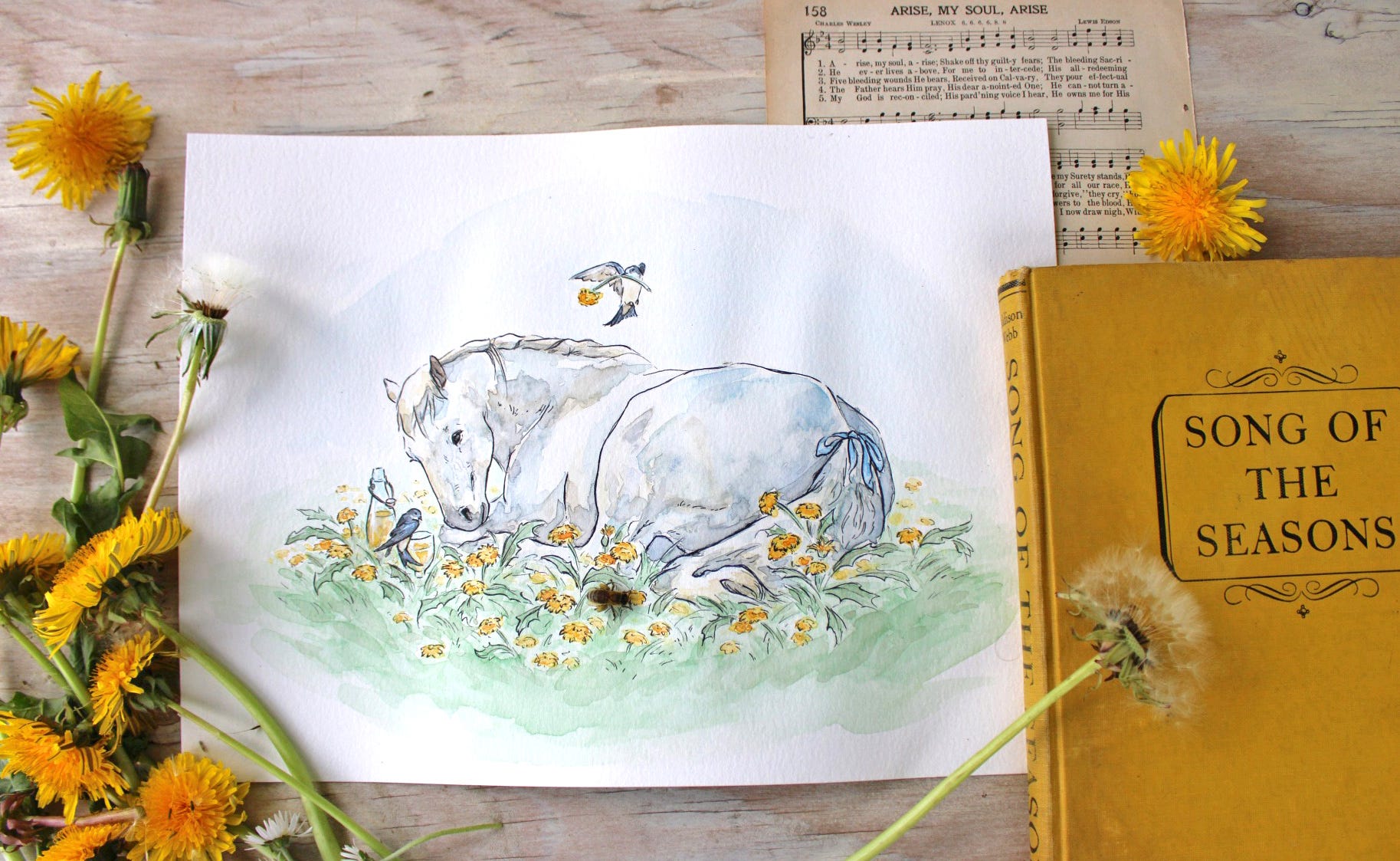

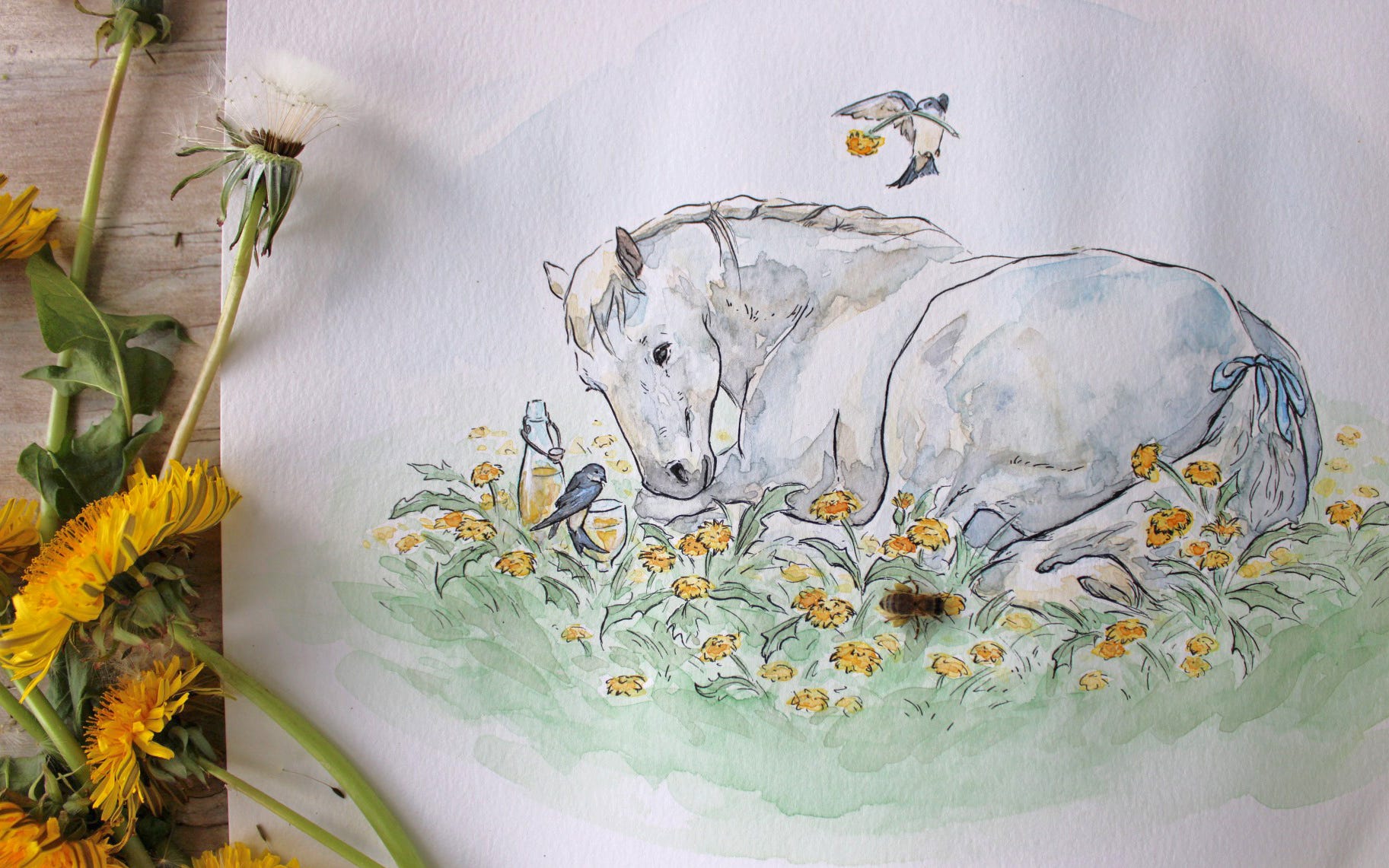
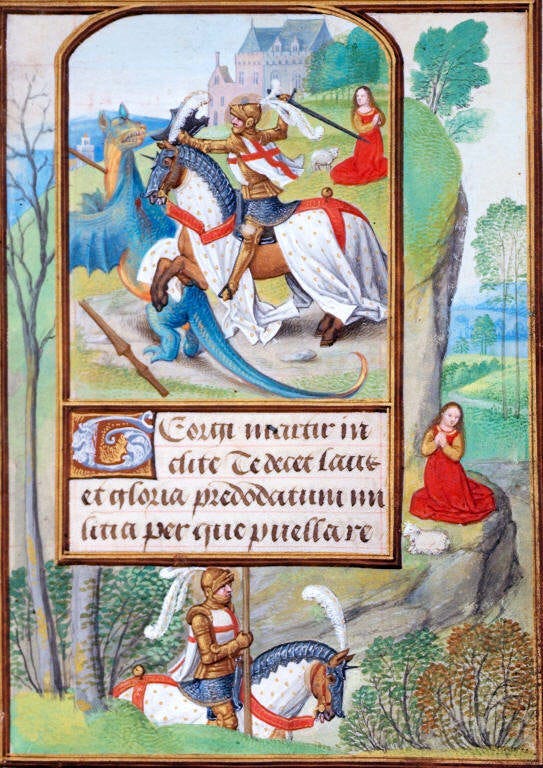



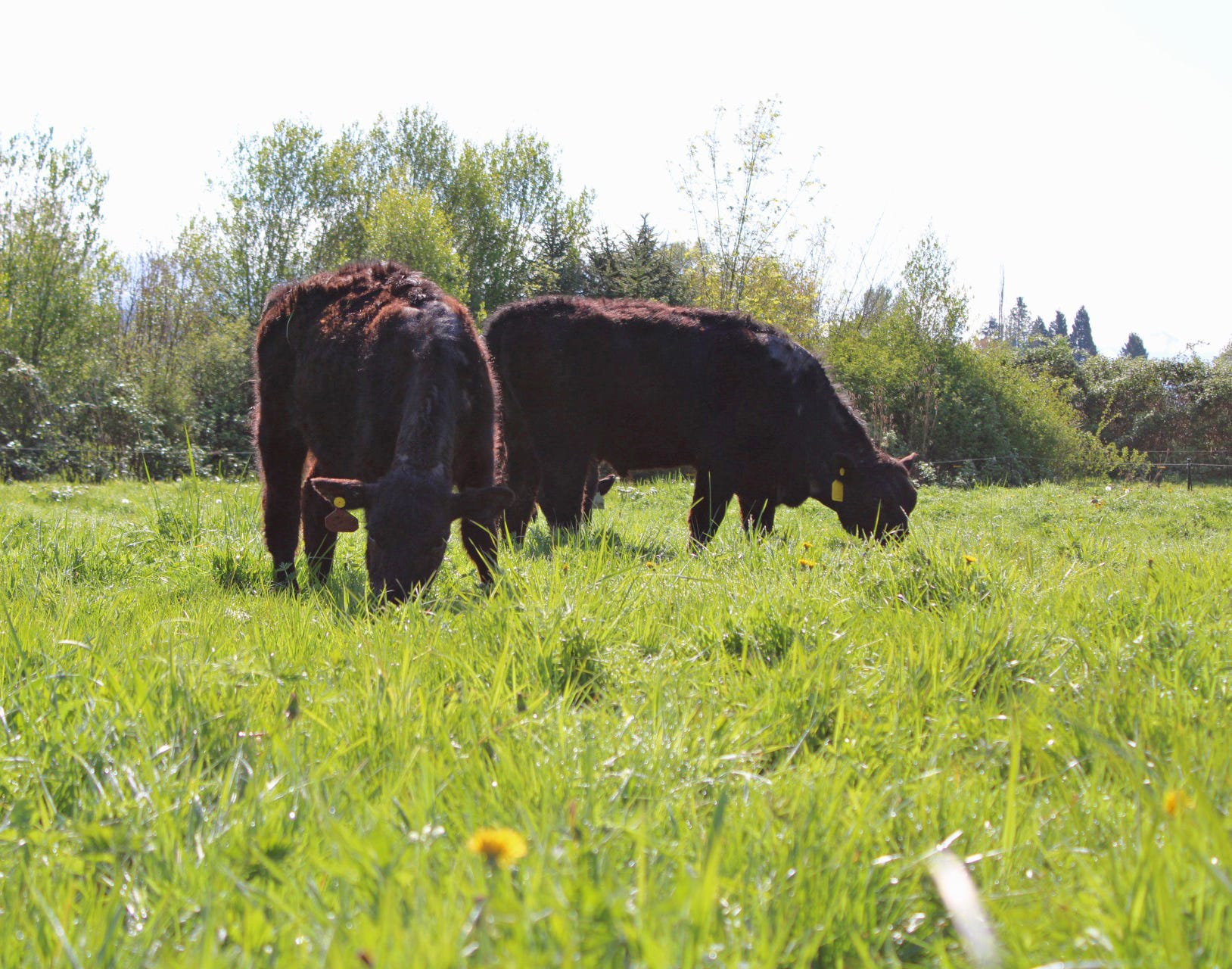




The line describing St. George as the “…herald of spring’s fullness” feels especially relevant this week! Grateful to learn something new and read such beautiful primary sources in each of your posts. 🐝💫🌼
Absolutely fascinating and I find it especially so that it is the European/Slavic/Russian peoples and traditions that have St George mentioned so frequently. They were mostly peasants and farmers and that makes perfect sense for them to have this connection to a Protector for their livelihoods. Like you, I find their choices of marking crosses and saying prayers humble and vulnerable but an example to us of trust and surrender. My Dad used to still go out on his motorbike and check on his diminished herd of cattle several times a day. It was an instinct that could not be forgotten or put aside simply due to illness and old age. So David is in fine company! That bee - a God moment.